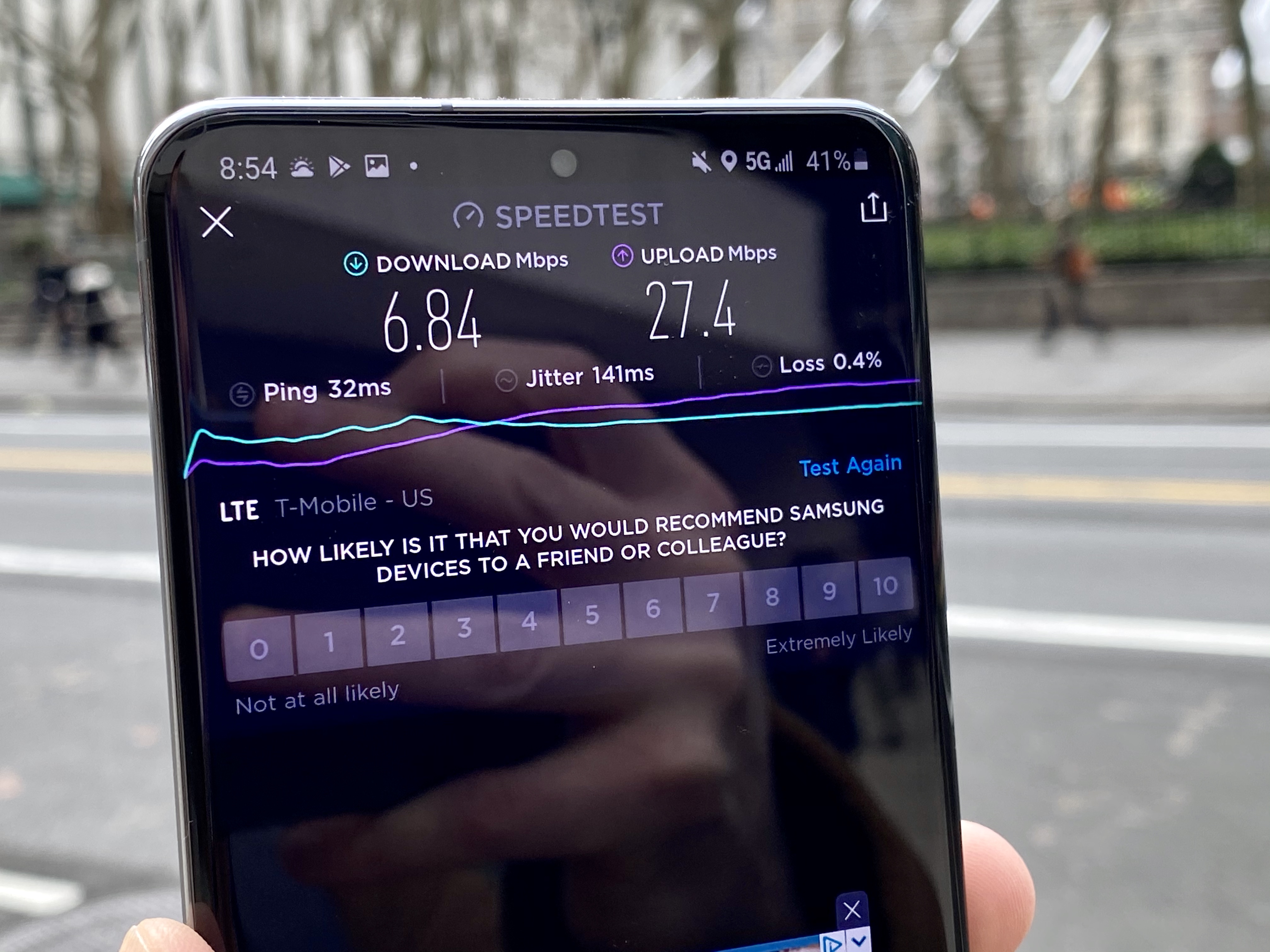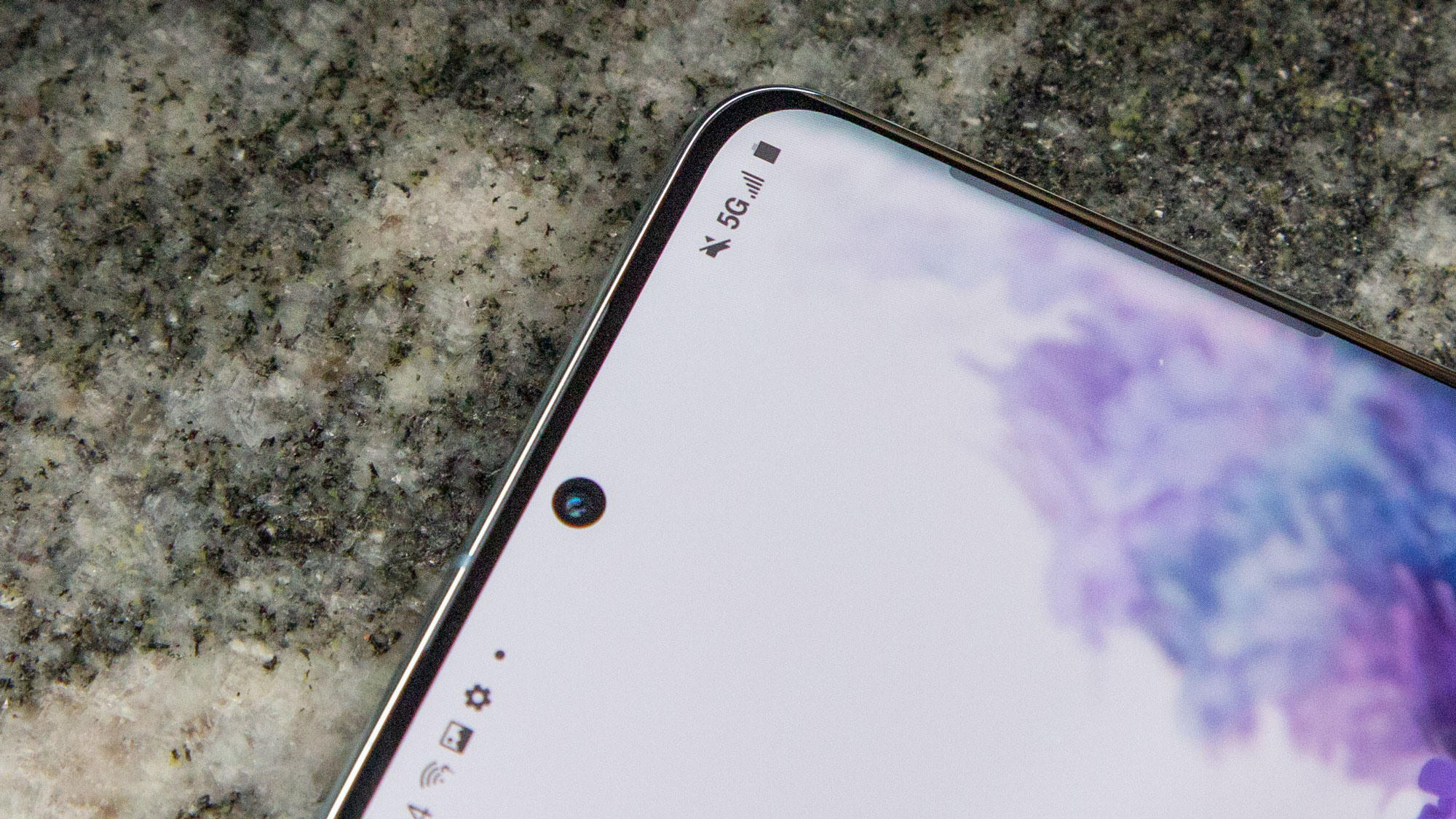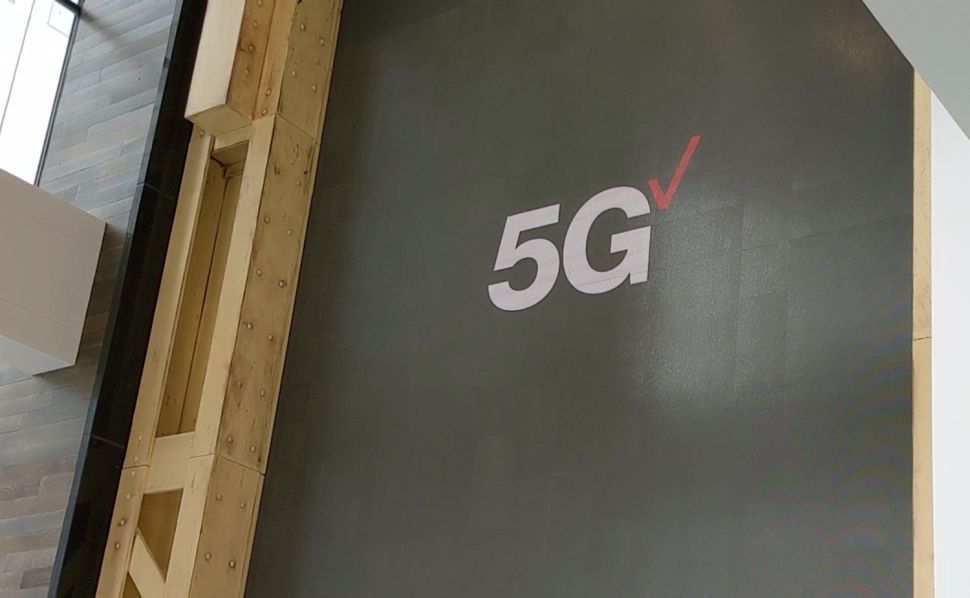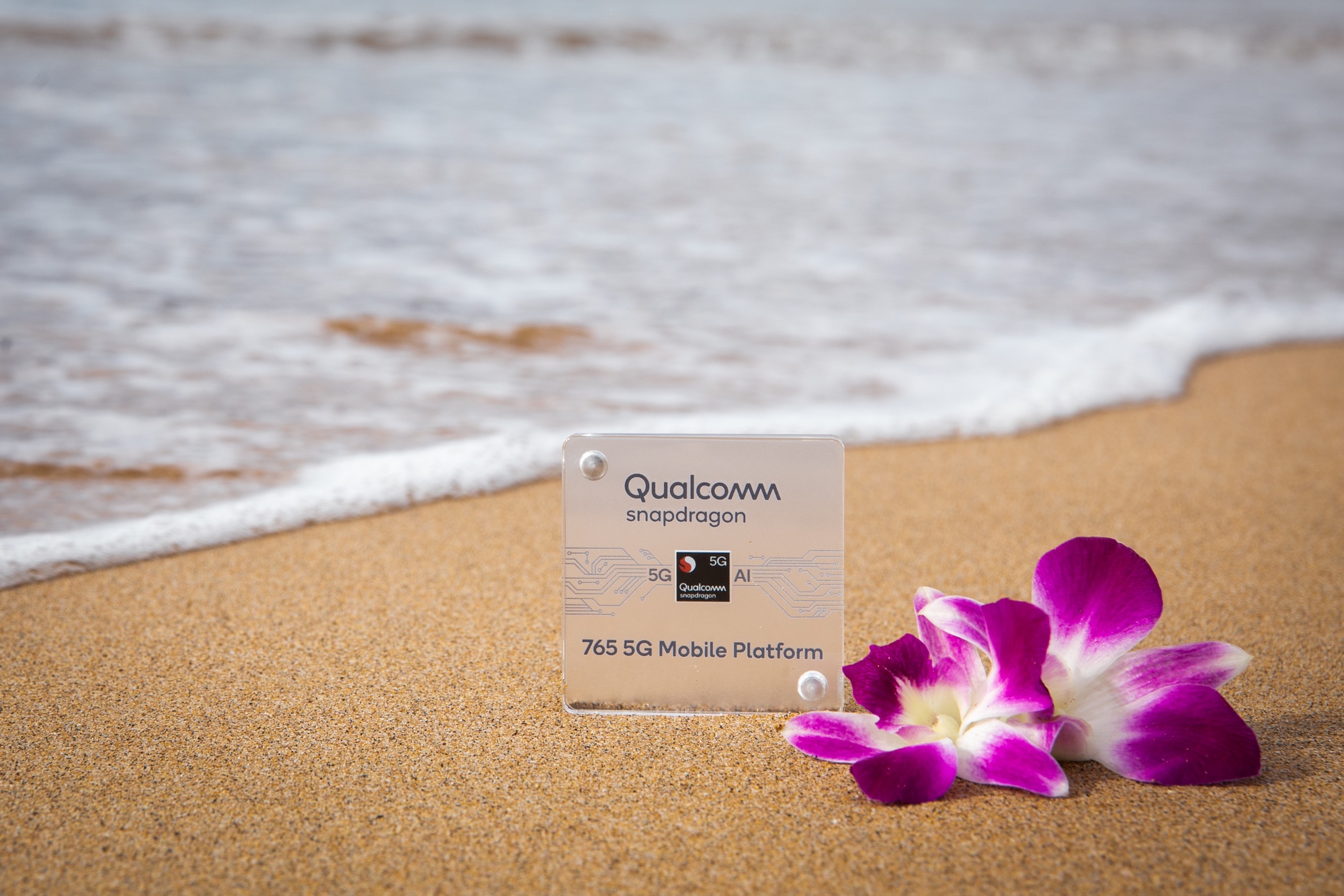Should you buy a 5G phone in 2020? Here are the pros and cons
More 5G phones than ever are available, but is the time right to get one?

What a difference a year has made for 5G. The first 5G networks didn't come online until April, and 5G phones didn't start shipping until later in the spring. The few 5G-ready devices that appeared initially were prohibitively expensive.
So the question in 2019 wasn't "Should I get a 5G phone?" but rather "Why would you want to?"
- 5G phones: What's here now and what’s coming soon
- Samsung Galaxy S20 Ultra review: Our verdict is in
- Plus: Galaxy S20 speed test - Verizon vs T-Mobile
Things have definitely changed over the last 12 months. All four major U.S. carriers now offer 5G coverage, though how extensive that service is varies from carrier to carrier. You've got more choices with 5G phones, with a lot more phones now offering connectivity to the speedy cellular internet.
5G phones are still among the most expensive phones you can buy, but you'll find a few that cost less than $1,000 — a big change from 2019, when four-figure prices were standard for 5G models.
So, the question of whether you should now get a 5G phone is more relevant in 2020 than it was last year. As for the answer, it still depends on where you live, which wireless carrier you use and how much you're ready to pay for a phone. as an aside, Roland Moore-Colyer has one compelling reason to adopt 5G.
Here's a look at why you should get a 5G phone this year, along with reasons why you may want to hold off.
Why you should get a 5G phone
5G's no longer the stuff of the future. The new networking standard is here now. Here's what has changed over the past year to make 5G more attractive to mobile customers.
Get instant access to breaking news, the hottest reviews, great deals and helpful tips.
5G is faster than LTE: The main reason to get a 5G phone this year is the same as it ever was: 5G networks deliver faster speed and lower latency than their 4G counterparts.

When we tested 5G networks in the past year, we usually saw marked improvements in download speeds for 5G vs. 4G. On networks that use millimeter-wave technology, such as Verizon's 5G network, we occasionally saw speeds top 1 Gbps. Even the lower range of download speeds we logged when testing Verizon 5G was a big improvement over the carrier's LTE performance.
Even with service that uses low-band spectrum, like T-Mobile's 5G network, we've seen modest improvement over LTE speeds in some cases (though not always, as we'll discuss below).
The main advantage of low-band 5G networks is their wider reach, but when we tested the OnePlus 7T Pro 5G on T-Mobile's network last December, we saw download speeds of 152 Mbps in some tests, a 36% improvement over T-Mobile's LTE speeds in the same spot.

More importantly, using T-Mobile's 5G network, we were able to download a 3-hour-plus movie off of Netflix in less than 3 minutes. The download was still taking place over LTE after 10 minutes.
The bottom line? 5G is definitely faster than 4G LTE, even on 5G networks that are putting the initial focus on coverage rather than speed.
5G coverage is becoming more widespread: Speaking of 5G coverage, it's easier to find these days than it was last spring. T-Mobile's low-band network boasts a nationwide reach, covering 5,000 cities and reaching 200 million people. That figures to expand even more once the T-Mobile-Sprint merger finally goes through, and that could happen as soon as April. Sprint’s 5G network launched last year in nine cities, and it added coverage in the Miami area prior to this year’s Super Bowl.
AT&T is building out a national network, too, though it's available in only 80 cities as of this writing. The carrier expects to have national reach for its 5G network by the middle of the year. Thanks to the Galaxy S20 Plus and Galaxy S20 Ultra, AT&T has opened up its higher-speed 5G Plus in 35 cities which was previously restricted to select customers.
As for Verizon, it spent 2019 building out 5G coverage in parts of cities, hitting its goal of 30 locations by year's end. As of this writing, the carrier lists 34 cities with high-speed 5G coverage.

That reach figures to continue expanding throughout the year, as carriers cover more area with their 5G networks. So if you weren't covered in the initial 5G rollout, don't worry; there's a chance that will change in the near future.
5G phones are more plentiful: When Verizon threw the switch on its 5G service in Chicago and Minneapolis last April, there wasn't even a phone with built-in 5G support to use on the first commercially available mobile network. Instead, you had to turn to the Moto Z3 and its 5G Moto Mod attachment to connect with the network.
A handful of 5G phones came out throughout 2019, from Samsung, OnePlus and LG, but these devices were often limited to specific carriers, and they could be pretty pricey. Both the Galaxy S10 5G and Galaxy Note 10 Plus 5G, released last year, would set you back $1,299. That's a lot to pay for connecting to a network that was still being deployed at the time.
It's quite a different story in 2020. The latest flagship phones from Samsung — the Galaxy S20, Galaxy S20 Plus and Galaxy S20 Ultra — all feature 5G and work with every carrier. (One caveat: The Galaxy S20 isn't available on Verizon's network yet, as Samsung needs to release a version that works with millimeter wave; expect a Verizon-capable S20 to come out before midyear.) And while the Galaxy S20 Ultra costs an eye-popping $1,399, both the S20 ($999) and S20 Plus ($1,199) cost less than last year's 5G phones from Samsung.

More 5G phones are on the way, too. Sony has announced the Xperia 1 II, which is coming out later this spring, while LG has taken the wraps off the V60 ThinQ. Both those phones offer 5G connectivity. Neither has an officially announced price yet, but LG is promising that the V60 will cost less than the $999 Galaxy S20.
The latest 5G phones are future-proof: There's something else noteworthy about all these 5G phones arriving this year. They use Qualcomm's X55 5G modem, and in addition to supporting faster speeds — it can reach peak speeds of 7.5 Gbps — the X55 can work on multiple kinds of 5G networks. Take the S20 Plus and Ultra, which are able to connect with both AT&T's more extensive low-band coverage and its higher speed 5G Plus service.
That's important because as carriers build out their 5G coverage, they're going to incorporate other technologies. Verizon may rely heavily on the millimeter-wave band for its 5G coverage at the moment, but it's going to use lower-band spectrum to extend its 5G reach over time. And if you buy a new phone with the X55 modem inside, you'll be able to take advantage of that development.
That means the phones you buy this year will still be relevant even after a couple years of 5G development — a big plus in this era where more of us are holding onto smartphones for longer than two years.
You're not paying extra for 5G service: It was a mystery what wireless carriers were going to charge for 5G last year, but at this point, every carrier has spelled out what 5G coverage will cost you. In all but one case, the answer is "not any more than what you pay for your current cellphone service."
T-Mobile includes 5G coverage as part of its $70-a-month Magenta unlimited plan. AT&T and Sprint bake 5G coverage into their monthly cellphone plan prices, too, though you're required to pay up for the two carriers' more expensive unlimited-data options. (In Sprint's case, that's the $80-a-month Unlimited Premium tier, while AT&T includes 5G coverage with its $85 Unlimited Elite and $75 Unlimited Extra offerings.)
Verizon is the only carrier to charge extra for 5G coverage; you tack $10 a month onto your regular unlimited-data plan. However, three of the four unlimited data plans available through Verizon currently include 5G access at no additional cost, so even there, you're not paying extra for 5G.
Why you should wait to get a 5G phone
5G may be more robust than it was last year, but that doesn't necessarily mean it's ready for everyone. Here's why you might want to hold off on getting a 5G phone, at least for a little while longer, if not until 2021.
Cheaper 5G phones are coming: The OnePlus 7 Pro 5G is currently the cheapest 5G phone you can buy, with Sprint offering the device for $840. The OnePlus 7T Pro 5G McLaren ($899) and Galaxy S20 ($999) are right behind it. But less expensive 5G phones are on the way, and you won't have to wait long for them.

Last year, Qualcomm unveiled the Snapdragon 765, a system on chip with an integrated 5G modem that's meant for less expensive devices than the flagship phones we've seen so far. Already, TCL has announced plans to release a 5G-ready version of its TCL 10 for less than $500 before midyear, and the Coolpad Legacy 5G will ship for less than $400 at some point in 2020. If you're willing to bide your time, you can get a 5G phone for half the cost of what you'd pay today.
Superfast 5G is hard to find consistently: We've mentioned that networks built on millimeter-wave technology can approach, and sometimes top, speeds of 1 Gbps. But millimeter-wave-based networks can be hard to find. While AT&T's millimeter-wave-based 5G Plus service is now open to everyone, it's limited to 35 cities. T-Mobile has millimeter-wave towers in just a half-dozen cities.
While 5G networks built on low-band spectrum outperform LTE in most cases, the speed boost at this point isn’t substantial. And performance can occasionally disappoint — my colleague Mark Spoonauer wasn’t impressed by the Galaxy S20 Ultra’s 5G speeds on T-Mobile’s network in Manhattan.
As for high-speed networks, Verizon boasts the fastest 5G network thanks to millimeter wave technology, but our testing has found that you have to be in sight of a tower to enjoy those high speeds. Millimeter-wave signals have a hard time going around physical obstructions like walls and buildings, and getting a signal indoors is a nonstarter unless there's a 5G tower in the room with you.
All that's going to change over time, of course, but if you're expecting fast 5G speeds all the time without interruption, you'd best wait for carriers to improve their networks.
Where's the iPhone?: We've mentioned a lot of 5G-ready phones already, but one very popular brand is missing from the equation. Apple has yet to come out with 5G-compatible iPhones.

That's going to change in a big way this fall when multiple versions of the iPhone 12 will likely work with 5G. Some analysts expect every new iPhone coming from Apple this fall to feature 5G.
But it's a long time between now and the iPhone 12's release. (And it could be even longer, depending on the coronavirus outbreak, which has the potential to disrupt Apple's production schedule in Asia and push back the iPhone 12's launch.) Apple fans are going to want to wait until the iPhone 12 comes out before they even consider getting a 5G phone, and that could mean holding off until 2021.
Philip Michaels is a Managing Editor at Tom's Guide. He's been covering personal technology since 1999 and was in the building when Steve Jobs showed off the iPhone for the first time. He's been evaluating smartphones since that first iPhone debuted in 2007, and he's been following phone carriers and smartphone plans since 2015. He has strong opinions about Apple, the Oakland Athletics, old movies and proper butchery techniques. Follow him at @PhilipMichaels.

